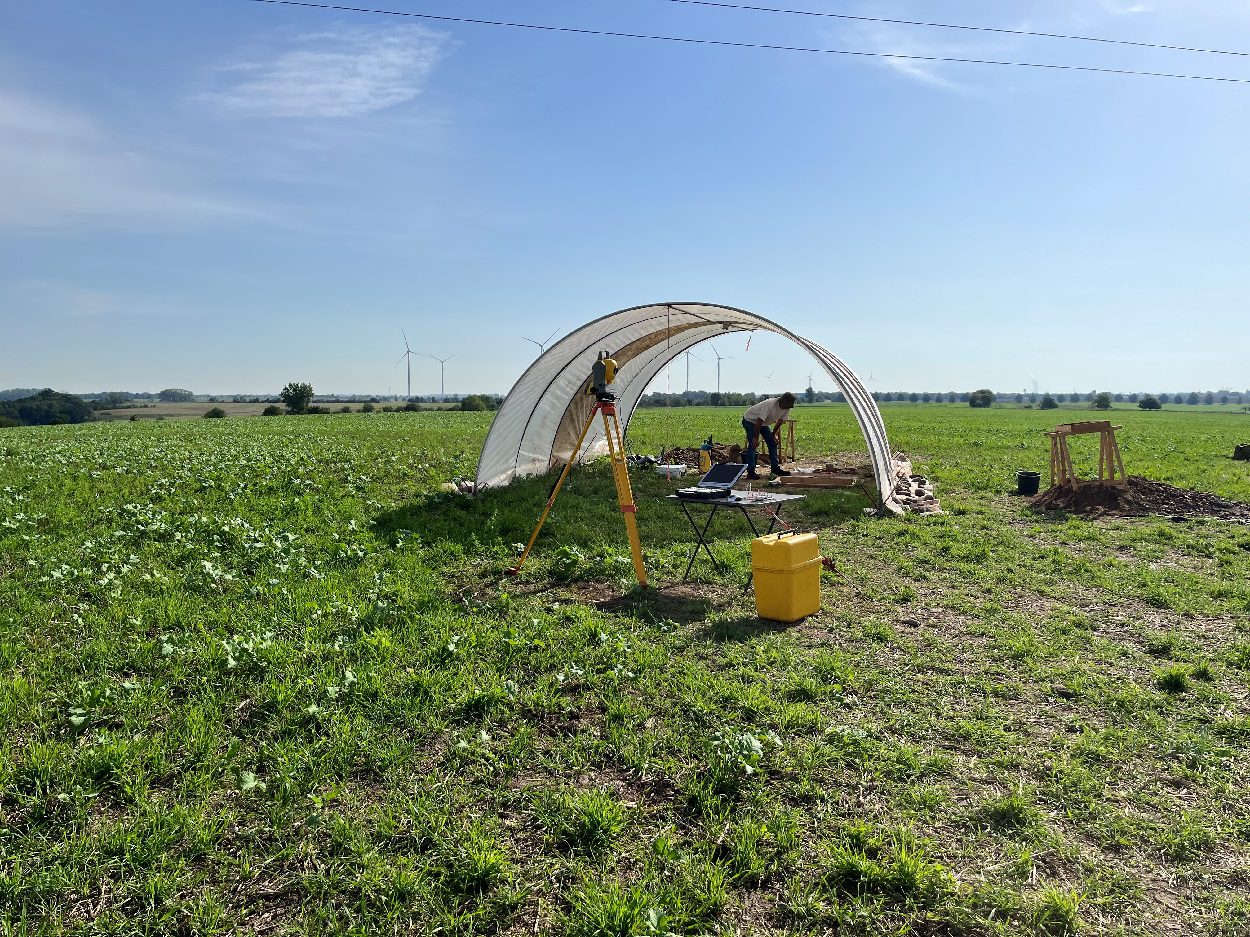Archaeologists from the Saxony-Anhalt State Office for Monument Preservation and Archeology have been excavating a 9,000-year-old Mesolithic hunting camp near the location of the “Shaman of Bad Dürrenberg.”
The “Shaman of Bad Dürrenberg” is the burial of a 30 to 40-year-old woman who died around 9,000-years-ago in Bad Dürrenberg, Germany.
She was found in a grave containing lavish grave goods interpreted as requisites of shamanistic practices. A headdress made of deer antlers and animal tooth pendants show the dead woman’s special position as a shaman, the spiritual leader of her group.
The hunting camp is located near Dehlitz (Burgenlandkreis), where over a five year period the researchers have unearthed more than 6,000 stone artefacts.
Recent excavations have found numerous artefacts in the plowing horizon, including stone implements, bone and antler remains, and a large number of microliths. Interestingly, very few examples of stone tools used for meat processing have been uncovered, suggesting that the camp was only in use several times temporarily.
According to the researchers: “Due to the spatial proximity to the grave in Bad Dürrenberg, the similarity of the raw material used to make the devices, and the similarity of the shapes of the devices, it is obvious that the hunting camp near Dehlitz is linked to the Shaman of Bad Dürrenberg”.
Through the ongoing research, archaeologists, geneticists, and anthropologists have been able to gain new insights into the living environment of the Mesolithic hunters and gatherers living in the region around Bad Dürrenberg.
Header Image Credit: Oliver Dietrich







